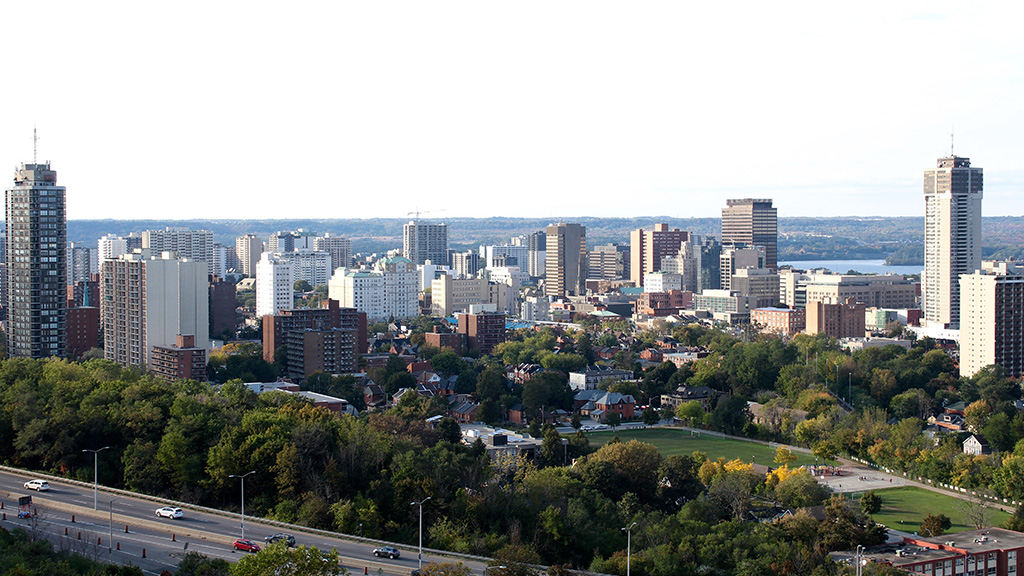Ontario’s minister of environment has told the City of Hamilton to inspect its entire sewage system after Hamilton Water staff discovered a 26-year-old breach that has resulted in sewage being funnelled from an east Hamilton neighbourhood into Hamilton Harbour.
David Piccini said Nov. 25 he has instructed his staff to require the City of Hamilton to audit its entire system and come up with a remediation plan.
The minister said in a statement he believes the continued lack of oversight by the municipality is “unacceptable” and that the ministry will hold the city accountable for cleaning up the spill. Piccini said he is requiring Hamilton to draw up the remediation plan to “clean this mess up.”
The faulty infrastructure was discovered Nov. 22. A statement from Hamilton Water indicated while maintenance staff were working on an unrelated job they uncovered a hole in a combined sewer pipe that allowed sewage to spill into a large storm sewer that discharges into the harbour. The site is near Burlington Street at Wentworth Street North.
“Staff, after preliminary investigation and consultation of city records, believe the hole was put in the combined sewer pipe in 1996. It appears that the contractor at the time was under the impression that all pipes were storm sewers and were designed to directly connect to box culverts leading out to the harbour,” the statement said.
Upon learning about the spill, Hamilton Mayor Andrea Horwath directed the city auditor to investigate “how a spill of this nature could go on for more than 20 years without being detected.”
Ontario Sewer and Watermain Construction Association executive director Patrick McManus said the breach not only raises issues about possible mistakes by the sewer contractor or city staff in 1996 but also points to concerns about the broader inspection regime in the city and across Ontario.
He said he has received calls of concern from members in the wake of the revelation.
“It certainly calls into question the inspection process and how we monitor the quality of our underground infrastructure,” stated McManus. “Most municipalities rely on age-based inspections rather than physical inspection and this can occasionally be the result.
“It’s why we advocated for more physical inspections, especially as the technology improves to make this more financially viable.”
Addressing the later reports that the city has been told to inspect all 2,000-kilometres-plus of buried pipe, McManus said, “Certainly it is a burden both from a financial and administrative standpoint. Technology is improving for how to map the condition of underground utilities, given drone technology, but it will be costly for the city.
“And this is obviously something that was not on their radar.”
McManus said he questioned Hamilton Water’s characterization of the incident as a contractor error.
“Contractors doing this type of work in the past and present have a keen understanding of how these systems work and most certainly understand that storm and sanitary sewers are different,” he said.
He noted one report suggested “an incorrect illustration was given to contractors, which led to a hole being made into a combined sewage pipe in 1996.”
McManus said, “The issue seems to have been an issue of poor project design provided to the contractor and poor oversight on the inspection by the city.”
Longer term, McManus said, the episode highlights the problems that the combined sewer legacy systems pose for older urban centres in the province. Most have been slowly working to replace the systems or put in place mitigation measures, he noted, but the cost is too significant for a municipality to replace or mitigate completely in short order.
It is an issue that needs to be redressed as new communities are built in Ontario, said McManus, given that over $50 billion in municipal infrastructure is not up to a state of good repair.
Upon discovering the leak, Hamilton Water staff reported the spill to the Spills Action Centre and also to City Spills. The city took immediate action to stop the flow from the leak to the harbour.
The catchment area for the combined sewer system serviced by the pipe is approximately 50 properties in the Burlington Street and Wentworth Street North area.
Horwath’s statement said while she is not yet aware of the total volume of sewage released, she was informed that it was substantial.
“I was assured that the nature of the spill makes the risk to human health very low,” stated Horwath.
Hamilton Water is reviewing its internal processes and “identifying opportunities for process improvement,” said its Nov. 22 statement.
The City of Hamilton did not offer a comment on the ministry’s orders by press time.
Follow the author on Twitter @DonWall_DCN.











Recent Comments